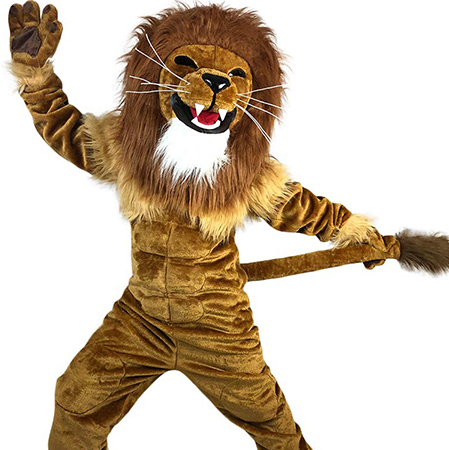Costumed performance has long been a staple in various forms of entertainment, sports, and public events. Among these performances, mascot costumes play a significant role, capturing the audience’s attention and creating memorable experiences. This article delves into the psychology behind costumed performance, particularly focusing on mascot costumes and their impact on both the performers and the audience.
Mascot costumes serve as a powerful tool in engaging the audience emotionally and psychologically. The larger-than-life appearance of mascots often invokes feelings of joy, excitement, and wonder. The exaggerated features and vibrant colors are designed to capture children’s imaginations while also appealing to adults by invoking a sense of nostalgia. This dual appeal helps create an inclusive environment where people of all ages can connect through the shared experience of cheering for their favorite team or character.

Moreover, mascot costumes act as a form of social glue, fostering a sense of community and belonging among fans. When individuals don these costumes, they embody a symbol that represents more than just themselves; they become ambassadors of the team, organization, or event. This transformation allows the wearer to step into a larger-than-life persona, which can significantly boost confidence and self-esteem. For many, performing in a mascot costume provides a unique opportunity to express themselves and contribute positively to the communal atmosphere.
The psychology behind wearing a mascot costume extends beyond mere visual appeal. For the performers, slipping into a mascot suit can trigger a shift in mindset, enabling them to adopt a persona that is distinct from their everyday selves. This alteration in identity can lead to increased levels of extroversion and enthusiasm, as the individual feels liberated to act in ways that might otherwise be outside their comfort zone. Additionally, the physical nature of performing as a mascot—whether it involves dancing, interacting with fans, or performing stunts—releases endorphins and other feel-good hormones, enhancing the overall sense of well-being for the performer.

From an audience perspective, the presence of a mascot can have several effects on perception and behavior. Research indicates that mascots can enhance event experiences by making them more memorable and enjoyable. The sight of a beloved mascot can evoke positive emotions, such as happiness and excitement, which in turn can influence fan loyalty and engagement. Furthermore, the playful antics and interactive nature of mascots encourage audience participation, creating a dynamic and lively environment that keeps attendees engaged throughout the event.
It’s essential to consider the challenges associated with costumed performance as well. Performing in mascot costumes requires significant physical exertion, and the restrictive nature of the suits can pose challenges, especially in terms of ventilation and mobility. Performers must often undergo rigorous training to handle the physical demands while maintaining the energy and enthusiasm expected from their characters. Despite these challenges, performers often find the experience rewarding, as the positive feedback from the audience and the unique opportunities for personal growth make the effort worthwhile.

In conclusion, understanding the psychology of costumed performances, specifically those involving mascot costumes, reveals much about how these characters captivate audiences and elevate events. From fostering community spirit to providing a platform for personal expression, mascots play a multifaceted role in modern entertainment. The blend of visual allure, emotional engagement, and the transformative power of the mascot persona creates a rich tapestry of experiences that resonate with both performers and audiences alike.
